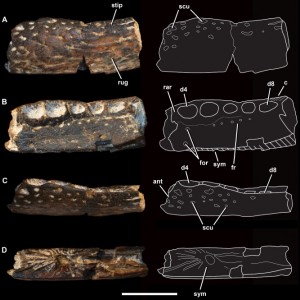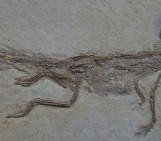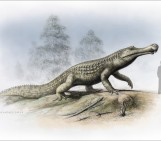Yes, Nessie had to be in the title. Am I sorry? A little. But not enough to not use it.
Colleagues from the University of Edinburgh and myself have described the first Scottish crocodile fossil! It’s from the Isle of Skye, from a time known as the Middle Jurassic, and dates back around 160 million years ago. Based on a partial bit of a jawbone (the dentary), it’s hardly the most spectacular fossil we’ve ever found, but it tells quite a neat story.
Based on the features we could identify of the jawbone, we were able to identify the specimen as belonging to Theriosuchus. This genus has quite a complicated history, and currently 5 species are assigned to it that span some 100 million years! That’s pretty long lived for a single genus. Theriosuchus belongs to a group known as Atoposauridae, which based on our current understanding went extinct along with the non-avian dinosaurs at the end of the Cretaceous period.
Atoposaurids are a pretty cool group of crocodile ancestors*, often characterised by a small, dwarfed body size (some were less than a foot long!), multiple tooth types, and habitation of coastal or inland ecosystems. They also show an unusual combination of ‘primitive’ characteristics to other crocodile species, as well as some features that we associate with more ‘advanced’ crocs, including those close to the crown group, Crocodylia.
However, some of the oldest remains previously assigned to Theriosuchus are based just on isolated teeth. They’ve been identified from the Middle Jurassic of both Africa and a couple of places in Europe, but as they’re just isolated teeth it makes their identification quite uncertain. Our fossil from Skye is the first non-tooth evidence of Theriosuchus, and places this genus confidently in the Middle Jurassic, most likely from the Bathonian Stage, some 160 million years ago or so. This also means that the teeth assigned to this genus probably do in fact belong to Theriosuchus. It also is the oldest remains that we can assign to Atoposauridae (at the present), so provides a nice first origination time for this group.
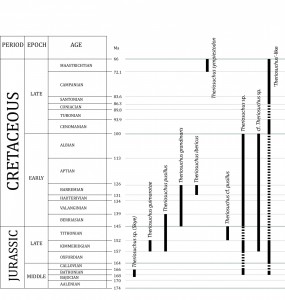
How does the Skye specimen fit in with other specimens of Theriosuchus? Blimey, that’s an impressive lineage!
Additionally, this tells us that Theriosuchus was fairly widespread when it first came about. As well as this, we know that it had at least two different types of teeth! Modern crocodiles just have canines for punching through flesh and bones, but Theriosuchus had some which were flattened and shaped like the tip of a spear – a lanceolate morphology. These teeth might have been more useful for crushing shells or small insects, which Theriosuchus might have preyed on as it lived in semi-aquatic swampy or deltaic regions.
We compared the Skye specimen with all other known specimens assigned to Theriosuchus that we could. We found that there were a lot of features that we could use to unite the specimen to this genus, such as the patterning on the outside of the bone, and the shape change in the teeth alveoli, that represent the different shapes the teeth would have had. We also noted that there were a couple of features that distinguished it from any of these species, raising the possibility that the specimen could represent a whole new species. However, we decided to err on the side of caution, and not name a new species for the Skye fossil, as it is quite fragmentary.
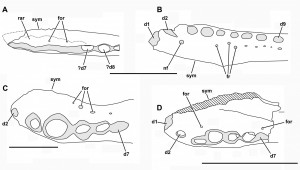
Several other jaws assigned to different species of Theriosuchus. Quite similar overall, but each one subtly distinct
Hopefully there’s more to come from the Isle of Skye, and along with the cute little Theriosuchus, help to fill out our knowledge of life in the Middle Jurassic.
You can read the paper here (it’s open access, obviously!), and if you have any questions or comments, I’d love to hear them!
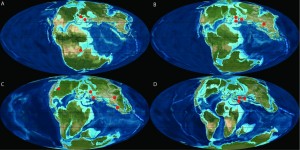
Theriosuchus specimens through time! Clockwise from top-left: Middle Jurassic, Late Jurassic, Early Cretaceous, Late Cretaceous.
Coverage by Shaena Montanari for Forbes.
*Crocodile usually refers to species that belong to the crown group Crocodylia, that includes all living species of croc and alligator. Atoposaurids, and other extinct groups, can be classed as Crocodyliformes, which go much further back in time and were around before Crocodylia evolved in the Late Cretaceous.

